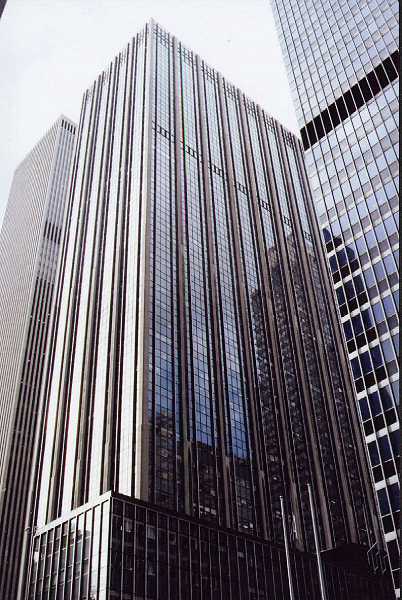|
||
|
Public Contribution in
High-Rise Building Design
|
||
|
@ New York City
|
||
|
Rockefeller
Center : The City within the City
|
||
|
The
Modern Complex
|
||
|
Time
Life Building
|
||
|
Background
|
||
 |
||
|
It was built for the Time-Life publishing company as the first building in the Rockefeller Center Extension across Sixth Avenue from the original Center. The extension, driven by the Rockefeller Center Development Corporation, was to replace the existing low-rises with new office towers along the model set by the Rockefeller Center. Wallace K. Harrison was to head the designing of the buildings and use similar themes in the facade treatment to link the addition to the older skyscrapers east of the avenue. |
||
|
The construction work of the Time-Life Building was begun modestly with Marilyn Monroe detonating the first dynamite for the excavations in 1957. The building was completed two years later, in 1959. There is 130,000 mē of office space within the building. By acquiring and razing the adjoining Roxy Theater (Walter Ahlschlager, 1927) plot, Rockefeller Center, Inc. could increase the size of the new office tower to exceed the bulk allowed by the single plot's zoning. |
||
|
At the time of its completion, the building's 48 floors of 2,600 mē were the largest in the world thanks to the column-free interior spaces, with the support columns rising outside the curtain wall. Time-Life occupied 21 of the floors itself, with the rest rented out to various tenants. The 179 m tall building was the tallest slab-formed skyscraper in the city so far, although eventually it became the shortest of the Center Extension skyscrapers. It differs in appearance from the later built "Sixth Avenue Center" skyscrapers, like the next-door Exxon Building, in having less vertical "stripe" elements and more of open glass wall surface on its facade. The exterior column piers are clad in limestone and the windows are of green-tinted glass. |
||